Sesame: How to Introduce your Baby to this Potentially Allergenic Food
- What sesame allergy is and how common it is in babies around the world
- Why sesame seeds and crunchy sesame snacks aren’t ideal for early eaters
- How to safely introduce your baby to sesame to help lower the risk of sesame allergy down the road
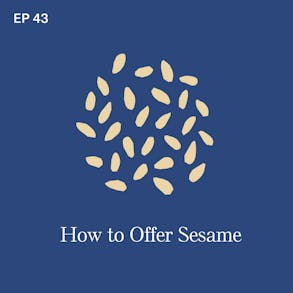
LISTEN TO THIS EPISODE
Episode Description
Sesame allergy is on the rise. And although sesame is not one of the Big 8 allergenic foods (...the 8 foods that account for about 90% of food allergy) - it is number 9. And because sesame allergy is on the rise, it’s a food that we want to introduce to baby early and often, but we need to do so safely.
In this episode I’m sharing 2 really easy ways you can introduce your baby to sesame, a potentially allergenic foods. We can’t feed baby seeds or hard crunchy sesame snacks, but tahini and black sesame seed powder are 2 products that can be slightly modified and made into a safe form for your baby to self-feed.

Links from this Episode
- Baby-Led Weaning with Katie Ferraro program with the 100 First Foods™ Daily Meal Plan, join here: https://babyledweaning.co/program
- Baby-Led Weaning for Beginners free online workshop with 100 First Foods™ list to all attendees, register here: https://babyledweaning.co/baby-led-weaning-for-beginners
Other Episode Related to this Topic
Resources & Research
- Warren, C. M., et al. “Prevalence and Severity of Sesame Allergy in the United States.” JAMA Network Open, vol. 2, no. 8, 2019, e199144. https://jamanetwork.com/journals/jamanetworkopen/fullarticle/2748660
- U.S. Food and Drug Administration. “The FASTER Act: Sesame Is the Ninth Major Food Allergen.” FDA, 12 Apr. 2024, https://www.fda.gov/food/food-allergies/faster-act-sesame-ninth-major-food-allergen.

Latest Episodes
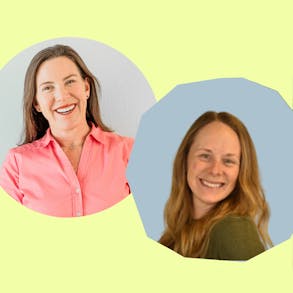
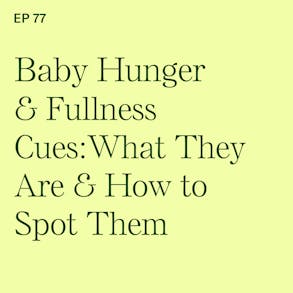
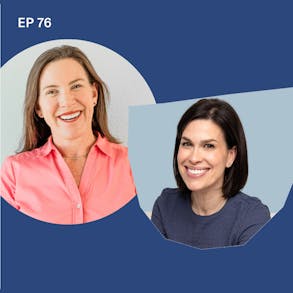
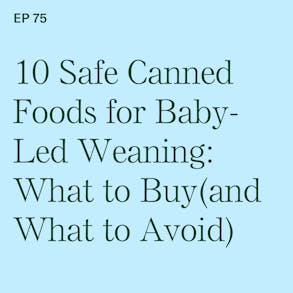

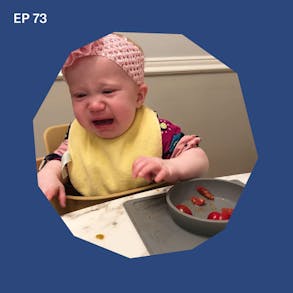
Skylight Frames (0s):
I will be the first to admit that I was definitely late to the shared family calendar game for years. I would just keep stuff on the calendar in my phone or the sticky notes or my brain. My husband was on a need to know basis. Then I would get frustrated with him when he couldn't read my mind about all the stuff we needed to work on together to get seven kids. So there are sports and their activities and just get through the day. That all changed when I got a Skylight calendar earlier this year for Mother's Day. So I'd heard of the skylight, but at first I was like, oh, that's not for me. Like we're not a big technology family. My kids do not have tablets or watches. They do not have any way to check the calendar. Then I started realizing how much they were asking me if they could see my phone. Can I see your phone? I wanna see what time my soccer practice is. I have one son, can I see your phone? I need to see what time the Padres play every day when we got the skylight calendar, you guys, total game changer. It's this beautiful 15 inch display. I put it right on the counter in the kitchen so it's right at the kids' eye level, they can reach it. I put the family calendar that was previously only on my phone on the skylight. I color coded every kid. I even sat down recently and manually inputted our paper chore chart. So now every kid checks their chores for the day. They do it, they check it off, they get a star for every tour they do. After a certain number of stars, I've got like a whole reward system set up. The skylight calendar is amazing. It's wifi connected. It syncs seamlessly with your calendar. There are tons of customizable views for daily, weekly, or monthly planning. You can even put in meals, which I recently started doing, So that A, I would actually stay like on a meal plan during the summer when we're kind of off of our schedule. And B, everybody would stop asking me what's for dinner. Right now Skylight is offering our listeners $30 off their 15 inch calendar if you wanna check it out and organize your family life for yourself. I swear this will change your life too if you go to skylightcal.com/weaning. So again, go to skylightcal.com/weaning to get $30 off your 15 inch calendar. That's S-K-Y-L-I-G-H-T-C-A-L.com/weaning and get your calendar game on point now because I know that your brain is also approaching max capacity with that baby. And skylights calendar is pure heaven for connecting your digital and your non-digital world together.
Katie Ferraro (2m 13s):
And if you look at parts of the world where sesame is a regularly included ingredient in their cultural foods or food cuisine like Israel, for example, right? Whereas sesame is only like 0.1 or 0.2% of the population in North America has a sesame allergy. Sesame is actually the third most common food allergy in Israel. And of course if you look at the types of foods and the ingredients included in the cuisine there, there's a lot of hummus, there's a lot of tahini, which is Sesame seed paste. We can't offer that Sesame seed paste directly to the baby, right? Because it has the consistency of peanut butter or other nut butters which are too thick, they're too sticky and likely to get lodged on the roof or the sides of your baby's mouth. But you can very easily thin out that tahini the Sesame paste and offer to your baby off of a preloaded spoon.
Katie Ferraro (2m 59s):
And in that way it is totally safe and very feasible for your baby to safely self feed this new potentially allergenic food Sesame. Hey there. I'm Katie Ferraro, registered dietitian, college nutrition professor and mom of seven specializing in baby-led weaning here on the Baby-Led Weaning with Katie Ferraro podcast. I help you strip out all of the noise and nonsense about feeding, giving you the confidence and knowledge you need to give your baby a safe start to solid foods using baby-led weaning. Well, hello there. Welcome back. Today we're talking about Sesame. Now, Sesame is one of the top nine allergenic foods.
Katie Ferraro (3m 42s):
Those are the nine foods that account for about 90% of food allergy in North America. So it's one of the foods that you want to offer to your baby early and often to help lower the risk of Sesame food allergy down the road. And you might be like Sesame food allergy. I don't know anybody allergic to Sesame, But it kind of interesting because Sesame has been on the list of top allergens in many other parts of the world for a long time, but it's actually the newest potentially allergenic food added to the list in the United States. So we used to have the big eight, so it was like eat the eight and teaching parents how to do the top eight allergenic foods. And then a couple years ago they added Sesame. So now we call it the top nine.
Katie Ferraro (4m 22s):
We're gonna dive into all things Sesame today. I'm gonna walk you through why Sesame Matters, how you can safely offer it to your baby for baby-led weaning, and then what to watch out for when you are introducing Sesame to your baby. And that's whether you might be using tahini black Sesame powder, or if you're just trying to avoid choking hazards or you've never cooked with Sesame and you have no clue how to use it. I've got some tips for you in today's episode. Now I put out two episodes each week. Every Monday I do a solo mini baby-led weaning training episode like the one you're listening to today. And then every Thursday I do a longer interview style episode with another feeding expert. Be sure to hit subscribe wherever you're listening to or watching this podcast So that you can get notified each week when both of the episodes are live.
Katie Ferraro (5m 6s):
If you wanna see all 500 episodes in one place, go to the website bw podcast.com, or you can link to that below where you are listening to today's episode. And I want you to hang tight because today I'll be sharing some very specific ways that you can offer Sesame to your baby. I am a registered dietitian specializing in infant feeding and baby-led weaning. I have a program called Baby-Led Weaning with Katie Ferraro, where I walk you through how to make all of the foods on my original 100 First Foods list with this ultimate goal of getting your baby to eat 100 safe foods before they turn one. If you don't yet have a copy of my original 100 First Foods list, I give that away to everybody on my free workshop.
Katie Ferraro (5m 47s):
So this is a great place to start if you like, just are trying to figure out baby-led weaning. Check out that free workshop. It's called Baby-Led Weaning For Beginners. Everyone on that free workshop gets a copy of the 100 First Foods list. You can sign up for the workshop and take it right now, later today, tomorrow when your baby naps, whatever is convenient for you. That registered dietitian page is at babyledweaning.co/workshop or if you've already taken the workshop and you have your 100 First Foods list and now you're ready to dive in with some real on instruction on how to make all of those 100 Foods safe, check out the program Baby-Led Weaning with Katie Ferraro. I've got my 100 First Foods Daily Meal Plan in there. 100 First Foods content library packed with videos and recipes and instructions.
Katie Ferraro (6m 30s):
It's basically soup to nuts guided expert advice on how to help your baby safely start solid foods. The Baby-Led Weaning with Katie Ferraro program is available for you to register at babyledweaning.co/program. So let's dive in today to learning a little bit about Sesame. Now I like to start out each of these mini training episodes with a baby-led weaning tip of the day. And today's tip is that we don't wanna offer any hard, crunchy, crispy foods to early eaters because of their potential to choke. But I'm gonna show you how to make Sesame safe even for your early eaters. So you can start this as early as six months of age plus when your baby is showing the other reliable signs of readiness to eat.
Katie Ferraro (7m 13s):
Let's start by looking at Sesame and why does Sesame even matter when we're talking about feeding babies? So Sesame is now the ninth major food allergen. It was added in the United States to the big old list back in 2023. And the rationale for that was that there is a growing prevalence of Sesame allergy both in the United States, but as well in other countries. So as far as statistics go, it's thought that somewhere between 0.1 and 0.2% of North Americans are considered to be allergic to Sesame. Now if you compare that to other parts of the world, I think it's really interesting. 'cause if you look at Israel, for example, Sesame food allergy is the third most common food allergy here in the United States. For pediatrics.
Katie Ferraro (7m 52s):
We know that cow's milk, protein, egg, and peanut are the three most common food allergens. But as you can surmise, it's because those foods are a lot more prevalent in our diet. You tend not to see so much Sesame allergy here in the United States because I wouldn't list Sesame as a primary ingredient in the foods that most of us are eating. Now, if you look at other parts of the world, for example, in the Middle East, where foods like hummus, which is made with tahini, which is a Sesame seed paste, those foods are more prevalent than yes. We also see higher rates of Sesame food allergy there. So how do we safely introduce Sesame to babies? I mentioned in the outset that hard crunchy or crispy Sesame snacks are not appropriate for babies because they are a choking hazard.
Katie Ferraro (8m 34s):
Those Sesame snack products that you often see, you know, packaged and sold for sale as snacks, they also tend to have added sugars in them. So you'll see molasses or honey and it's recommended to steer clear of added sugars for babies and children up until age two. So not only do we not wanna offer hard, crunchy, and crispy foods because of the choking hazard, but we also don't want to offer any foods that contain added sugars when it comes to the introduction of Sesame because it's on the list of the potentially allergenic foods. We're lumping it in with the groups of foods that scientists and experts now recommend that we do early and often introduction of these foods. Okay? A long time ago, the guidance used to be, oh, hold off on the introduction of allergenic foods, and they thought that that's what would reduce food allergy risk, when actually the opposite appears to be true.
Katie Ferraro (9m 18s):
So based on current research and the latest guidelines, early and often, introduction of the allergenic foods can help lower the risk of those food allergies down the road. So it follows that we'd want to offer Sesame early and often in order to help lower the risk of Sesame down the road. To mentioned that we wanna avoid the crunchy snacks, we wanna avoid any Sesame foods that have added sugar, but we also, you know, you can't just offer a teaspoon full of Sesame seeds, for example, to your baby who's six months of age, right? But you also can't get a teaspoon or a tablespoon of raw sesames and shove 'em in your baby's mouth. That's not safe for your baby either, as those small seeds could be a potential choking hazard. Not to mention that putting anything in your baby's mouth, including a spoon, a spoonful of food in particular can be a choking hazard.
Katie Ferraro (9m 60s):
But think about that. Your baby who's never had anything in their mouth except infant milk, they're not going to be able to safely swallow all those sesames. Even if someone, you know, shoved a spoon of Sesame seeds in my mouth and it surprised me, I would suck air in and it would cause all those little Sesame seeds to get sucked into my airway and potentially cause choking aspirations. So we want to steer clear of those plain Sesame seeds 'cause there's definitely an easier way to get Sesame into your baby.
KiwiCo (10m 24s):
Hey, we're gonna take a quick break, but I'll be right back. How are you doing with your summer stress level? I know my kids are out of school, and while I love these longer days with less structure, they are long days with less structure. Thankfully, this year I've come prepared with my summer sidekick KiwiCo. KiwiCo develops hands-on projects and activities for kids of all ages, and they are my summer savior with the KiwiCo Summer Adventure Series. With the Summer Adventure Series, KiwiCo delivers awesome science and art projects where kids receive six hands-on project kits over six weeks with enriching content and fun activities to accompany each project. So you can stop that summer slide before it even starts with engaging projects like the archery set where kids build their own bow, helping to turn the outdoors into a playground of learning and fun. I know how hard it really can be to keep your kiddos and engaged and busy and challenged during these lazy days of summer. And for sure, yes, we should be relaxing. But if you are down for a little summer structure with projects that you'll enjoy working on as much as your kids do, go check out KiwiCo. You can get started building the best summer ever with KiwiCo and get $15 off your summer adventure series at Kiwico.com/weaning. That's $15 off your summer adventure kit at Kiwico.com/weaning.
Katie Ferraro (12m 2s):
Now, one of my favorite ways to offer Sesame is to use tahini. And I mentioned just a moment ago that tahini is Sesame seed paste, and you're probably familiar with tahini if you ever had hummus. If you look at the ingredient list and the nutrition facts panel on any hummus that you would buy from a store, yes, you'll see that it contains Sesame. But commercial hummus that you buy at the store also has a ton of added salt. And in addition to not wanting to offer babies any added sugars, we do want to steer clear of excess sodium. So commercially prepared hummus not a great option for babies because it is so high in salt. Now, when you think about tahini, if you've ever bought tahini and made your own homemade hummus, Tahini has a consistency that's kind of similar to peanut butter.
Katie Ferraro (12m 43s):
So peanut butter, you think like almond butter or cashew butter, but any sticky thick nut or seed butters are also not appropriate for early eaters because of their potential to choke a baby, right? If you have a thick glob of a sticky nut butter, it can easily get lodged on the roof or the sides of your baby's mouth. Again, we don't wanna offer that because we don't wanna potentially choke the baby, but you can take that tahini and just like we do with nut butters or with peanut butter, and you can thin that out. So if you take tahini and you mix it with breast milk, you whisk it really well till it's nice and smooth, and it just slides off of your adult stainless steel spoon that thinned out. Tahini is then safe enough to offer your baby from a preloaded spoon.
Katie Ferraro (13m 24s):
You'll notice I didn't say you put it on a spoon and shove it in your baby's mouth because again, putting anything in a baby's mouth including a spoon, can be a choking hazard. But We can honor the self-feeding principles of baby-led weaning and still offer naturally pureed foods like Sesame seed paste if we mix it up with breast milk or formula and then offer it off of what's called a preloaded spoon.
Ezpz (13m 44s):
So I like to use the EZPZ tiny spoons. They make a baby-led tiny spoon. This is an award-winning spoon that works great for babies to self-feed. It has a very small shallow bowl, appropriate for early eaters mouths. It has a short, fat round handle, which your baby using their whole hand or their pincer grasp can easily pick up and feed to themselves. So what you would do is you put the thinned out Sesame seed paste, so you put the thinned out tahini on that preloaded spoon, put the spoon in your baby's mouth and allow your baby to bring the spoon to their mouth. So in that way, again, honoring the self-feeding principles of baby-led weaning, but allowing your baby to safely self-feed that thinned out Sesame. So if you need an easy win when it comes to picking your next allergenic food, try some thinned out tahini. Again, the spoon that I like is called the EZPZ baby-led tiny spoon. If you go to the website, ezpzfun.com/babyled, you can see all my list of recommended gear for starting solid foods. And if you use the code BABYLED, you get 15% off everything at ezpzfun.com/babyled.
Katie Ferraro (14m 47s):
So in addition to mixing that tahini with breast milk or formula, you can also, if your baby's already passed cow's milk, milk protein, you know they're not allergic to cow's milk, you could mix it with full fat, whole milk, plain yogurt. You can mix it with unsweetened applesauce or only whatever you can find to get it nice and smooth. And again, that recommendation of having it smooth enough so it slides off of your adult stainless steel spoon is an indicator then that it will not get lodged on the roof or the sides of your baby's mouth. Now, you can also make your own low sodium hummus at home if you would like to. We have quite a few homemade hummus recipes inside of the Baby-Led Weaning with Katie Ferraro program actually have over 300 different recipes with instructions and videos on how to make all of these foods safe.
Katie Ferraro (15m 28s):
We have a really cool black Sesame oatmeal finger food recipe. So we have some families that have asked about black Sesame powder. So black Sesame powder is used in certain Asian cuisines oftentimes as a dessert. And again, we don't wanna offer any added sugar recipes for babies, but you can utilize that black Sesame powder to make the black Sesame oatmeal finger foods recipe. And again, all of those recipes are inside of the program at babyledweaning.co/program. If your baby has already been at finger foods for a while, you could try to do your own homemade hummus or that thinned out tahini. You can also offer it from a low sodium cracker or a bread. I also sometimes will mix the tahini with olive oil to get it nice and thin.
Katie Ferraro (16m 8s):
You can do that as well. Tini doesn't have a ton of taste. It tends to be unsalted, but double check your ingredient list because not all products are created the same. Ideally, we're looking for a tahini product, so the Sesame seed paste where the only ingredient in there is Sesame. So preferably no added sugar and no added salt. Now, if you offer Sesame to your baby, be sure to monitor them for up to two hours following their ingestion for the first, second, third, fourth, the first couple of times that they have that allergenic food. Keeping in mind that if your baby is going to have an allergic reaction to food, the vast majority of allergic reactions will occur within minutes and up to no more than two hours following ingestion. So it's not like you're gonna offer, you know, let's say the black Sesame oatmeal finger foods, and then like three days later, your baby has a weird diaper or hives and their face and you're like, oh my gosh, they're allergic to Sesame.
Katie Ferraro (16m 55s):
It doesn't work like that. Again, the vast majority of reactions are gonna occur within minutes and up to no more than two hours after ingestion. So keep an eye on your baby for those first two hours, the first couple of times that they have Sesame. And also keep in mind that babies are unlikely to react the first time that they try a food. It will most likely be on the second or the subsequent time if you're following the 100 First Foods Daily Meal Plan. Inside of my program, there's set weekly menus and meal patterns, and we show you how to do Sesame. We do that in week nine of the 100 First Foods Daily Meal Plan. It's a food that we offer two times on Friday, two times on Saturday, two times on Sunday. And again, if you wanna check out all those meal plans and the instructions on how to make all these foods, go to babyledweaning.co/program.
Katie Ferraro (17m 36s):
I'll put the links for all the resources from today's episode on the show notes page at blwpodcast.com/43, and a special thank you to our partners at AirWave Media. If you guys like podcasts that feature food and science in using your brain, check out some of the podcasts from AirWave. We're online at blwpodcast.com. Thanks so much for listening, and I'll see you next time.
Sleepcove (18m 6s):
Do you find it hard to sleep at night? Then the Sleep Gove Podcast can help you. Hi, I'm Christopher Fitten, the voice and clinical hypnotherapist behind Sleep Cove. Sleep Cove features, sleep hypnosis, meditations, and bedtime stories, all designed to help those of you who struggle at night to achieve a restful and peaceful night's sleep. Search for Sleep Cove on Apple Podcasts or Spotify and see why Sleep Cove helps millions of people sleep deeply all night long.
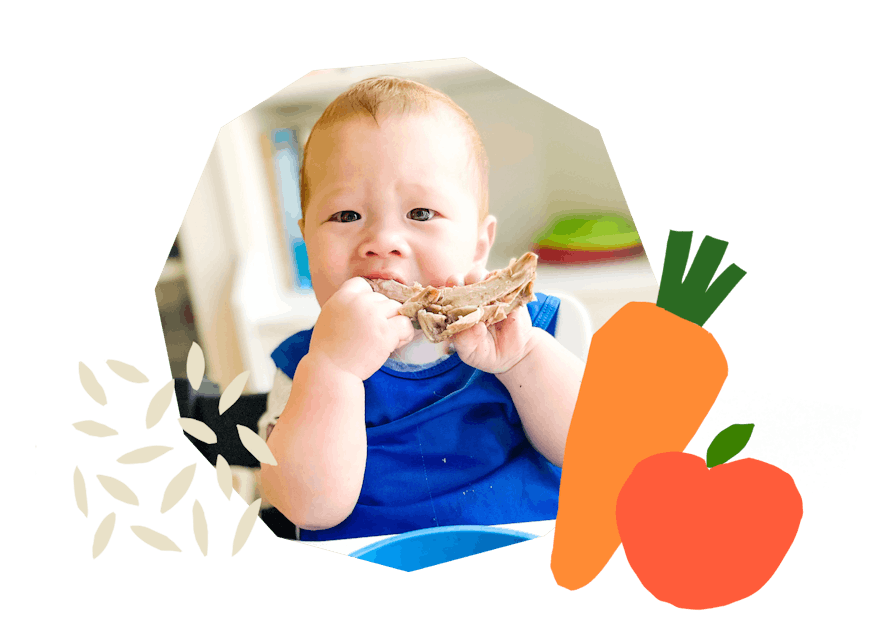
The Program Baby-Led Weaning with Katie Ferraro
A step-by-step digital program for starting solid foods safely and navigating the original 100 FIRST FOODS™ meal plan with baby-led weaning.
 EXPERT-LED, PROVEN APPROACH TO EATING REAL FOOD
EXPERT-LED, PROVEN APPROACH TO EATING REAL FOOD CONCISE VIDEO TRAININGS TO MASTER BABY-LED WEANING
CONCISE VIDEO TRAININGS TO MASTER BABY-LED WEANING 100 FIRST FOODS DAILY MEAL PLAN WITH FOOD PREP VIDEOS
100 FIRST FOODS DAILY MEAL PLAN WITH FOOD PREP VIDEOS
Baby-Led Weaning for Beginners Free Workshop
Is your baby ready to start solid foods, but you’re not sure where to start? Get ready to give your baby a solid foundation to a lifetime of loving real food…even if you’re feeling overwhelmed or confused about this next stage of infant feeding.
Get baby-led weaning recipes and tips delivered to your email inbox.

